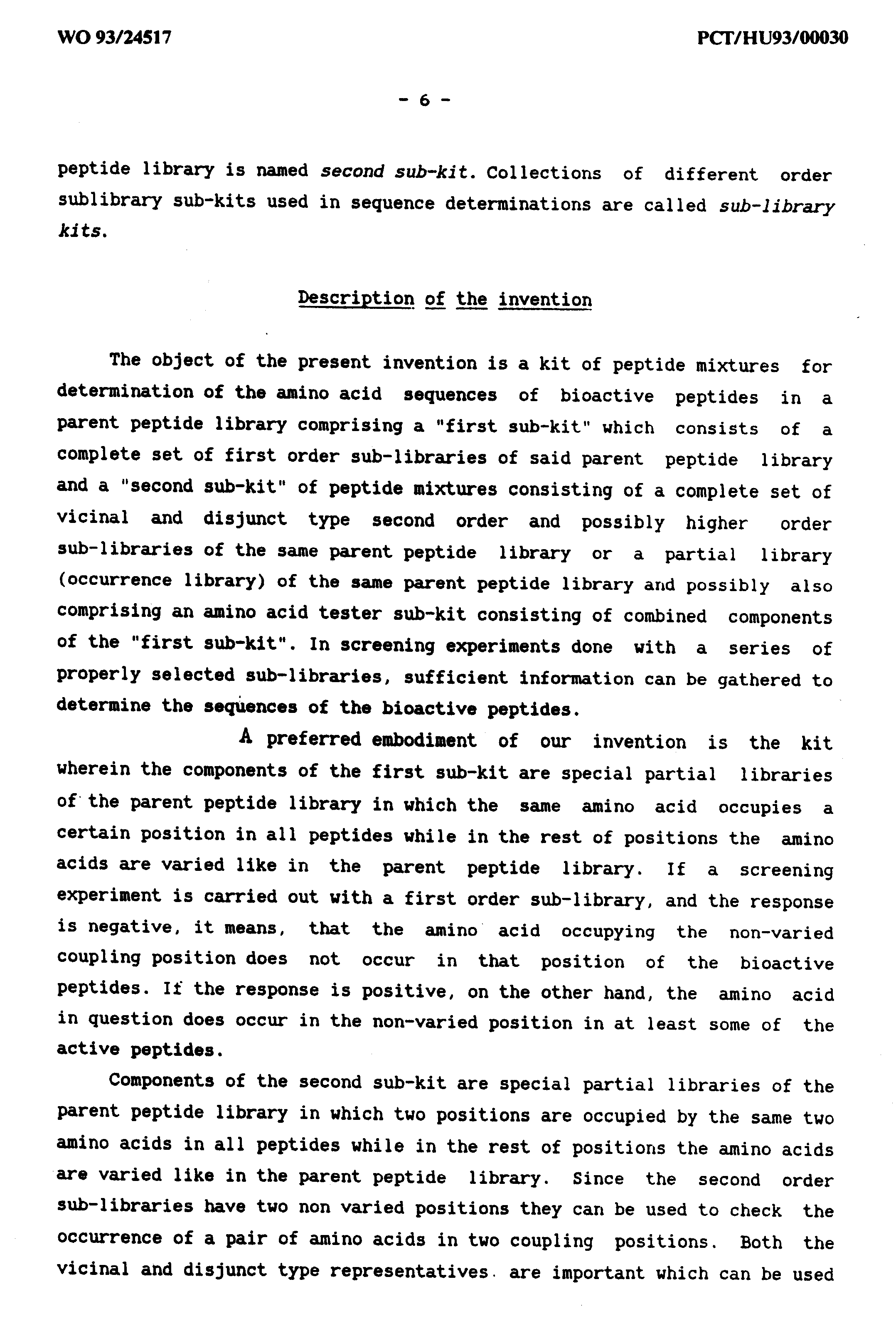First page of the PCT document
6th Page of the description

Explanation
Positional Scanning
Determination of the amino acid sequence of bioactive components of soluble peptide libraries by using pre prepared sets of sub-libraries
When using the iteration strategy the cooperation of a chemist and a biologist is required. In order to eliminate the need of synthesis in the deconvolution process, we developed sets of proper sub-libraries that could be used to identify the bioactive component of peptide libraries. The principle and application of the positional scanning was first described in our patent application entitled "Sokkomponensû peptidkeverékekbõl összeállitott készletek elõállitása és ezek alkalmazása biológiailag aktiv peptidek azonositására" (Preparation of sets of multi-component peptide mixtures and their application for identification of bioactive peptides) filed on May 21, 1992. Later the patent was abandoned and the principles were published (Sebestyén et. al. 1993, Furka 1994). Positional scanning was independently developed and applied by Houghten and his colleagues (1992). The photo of the first page of the PCT version of the patent can be seen below followed by the photo of the 6th page of the description.
First page of the PCT document
6th Page of the description

Explanation
The component mixtures of the sets are "first order sub-libraries". One position is occupied by the same amino acid in all peptides while in all other positions any other amino acid may occur. Figure shows all possible first order sublibraries (B-J) that can be deduced from a full trimer library (A) composed from three amino acids (yellow, blue, red).
In H, for example, all C-terminal positions are occupied
by the “red” amino acid. If the C-terminal position in the bioactive peptide
also happens to be also occupied by the “red” residue, this sub-library
shows activity in screening. Since this sub-library comprises all possible
sequences with “red” C-terminal the bioactive peptide must be present in
the sub-library. If the bioactive peptide has “blue” or yellow” C-terminal
the sub-library is inactive since the bioactive peptide is not present
in it.
If the sublibraries marked with + are the active ones
in screening (C, G and H), the sequence of the bioactive peptide (counted
from its N-terminal) is blue-yellow-red.
For deconvolution of a tripeptide library prepared from
20 amino acids in each position, 60 sub-libraries have to be synthesized
and screened. For screening of hexapeptides, a set of 120 sub-libraries
is needed. Once the set of sub-libraries is prepared in sufficient quantity,
they can be used in many different screening experiments. See examples
for their application at omission libraries.